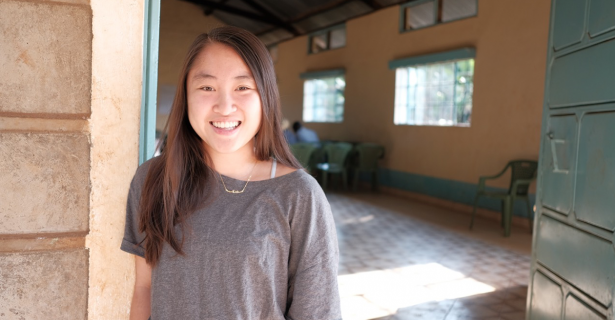“Community health workers deliver hope and health door to door, day in and day out; they are my heroes. It is our job to support them as they break that stubborn link between being poor and having poor health.”
-Josh Nesbit, CEO, Co-Founder, Medic Mobile
I’m writing this blog post as I watch the sunset through an enclosed porch at the Medic Mobile office in Nairobi, Kenya. These are the Africa Regional Headquarters, where the Kenyan team members come to work every day. Occasionally team members from Uganda, Senegal, or The United States come to work here, but the office is primarily Kenyan.
Medic Mobile is a global health non-profit that is based in San Francisco California, Nairobi Kenya, and Kathmandu Nepal. They have developed a mobile application that is deployed to Community Health Workers (CHW’s) in rural areas, empowering them with the elevated access that technology can provide. With the principles of human-centered, empathetic design in mind, the team members here work to create, build and support software that focuses on the needs of the community health workers.
This app provides the ability to collect and keep track of health data for each person that the CHW’s visit. With the digitization of this health data and the access to workflows that have been designed to ensure CHW’s are guided in providing the best care possible, Medic is working to change the fact that being poor often resulted in having poor health.
As an intern, I am tasked with writing a literature review on the new nurturing care platform, one of the new workflows that Medic is working to integrate into their application. This past week, I was given the opportunity to accompany my supervisor in the field and see the nurturing care design process in action as she made visits to health facilities in a town called Siaya that borders Lake Victoria. She was interested in learning how CHW’s incorporated nurturing care into their home visits to pregnant women and women with children under three years of age.
Nurturing care principles are founded on five components: good health, proper nutrition, opportunities for learning, safety and security, and responsive caregiving. Previously, these principles were incorporated into educational standards; however, recent evidence has found that the period from pregnancy to three years old is a critical time for the development of a child’s brain. Nurturing care is meant to engage with this development.
The health centers we visited were facilities in the middle of rural communities. Often, I saw children running around, mothers sitting on benches waiting for their sessions, and CHW’s facilitating workshops. The sessions that the Medic team was interested in observing were the playbook workshops. These are facilitated by CHW’s; caregivers are given time to play with their children in a supervised environment. The CHW’s are there to offer advice on how best to interact with their children.
Following a debrief with the CHW’s and our Medic team, we accompanied the health workers on some of their daily, door-to-door home visits. These home visits are how many families in rural communities’ access to health care. Health workers spend about an hour in each home, asking specific questions about the children, pregnancy, nutrition, and a myriad of other health topics. They assess the health of individuals and write referrals for clinic visits if necessary.
As a community health major, I’ve learned about community health workers and the way that they accomplish their work. I’ve read countless amounts of research on how to properly implement interventions that are effective, sustainable, and culturally appropriate. Seeing CHW’s doing their job and watching the Medic Mobile design team create tools that enable and empower health workers has allowed me to understand further and recognize the importance of this work.
In order to create interventions that are long-lasting, it’s important that the people designing the technology understand the community where it will be used. This can be the language, the culture, or the needs and wants of the community members. Medic’s mission is to support the health workers who are going door-to-door to deliver health care.
Through this internship, I’ve been given the opportunity to see this process first hand. It has brought to life many of the ideas I’ve learned in the classroom. Glad to hear! Hope she recovers fast from the stress of this incident!

